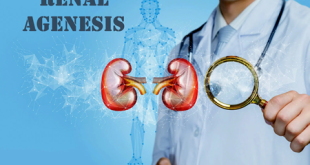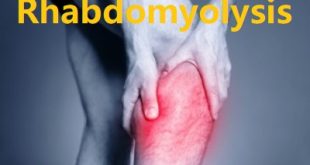Definition
Relapsing polychondritis is an uncommon, chronic disorder of the cartilage that is characterized by recurrent episodes of inflammation of the cartilage of various tissues of the body. Chondritis means inflammation of cartilage. Tissues containing cartilage that can become inflamed include the ears, nose, joints, spine, and windpipe (trachea). The eyes, heart, and blood vessels, which have a biochemical makeup similar to that of cartilage, can also be affected. Relapsing polychondritis is sometimes called the red ear syndrome.
Synonyms of Relapsing Polychondritis
- Chronic atrophic polychondritis
- Generalized or systemic chondromalacia
- Meyenburg-Altherr-Uehlinger syndrome
- Relapsing perichondritis
- Von Meyenburg disease
Pathophysiology of relapsing polychondritis
- Pathophysiology is uncertain, and causes of flares are also unknown. No specific factor or environmental risk exposure has been identified to date.
- Relapsing polychondritis results probably from a combination of a genetic susceptibility, a triggering factor, and a subsequent abnormal autoimmune reaction.
- The triggering and aggressive factors can be of multiple origins: chemical, toxic, infectious, or traumatic agents. Cases reports of relapsing polychondritis after a trauma of the pinna, per or intake of chondroitin–glucosamine, and intravenous intake of toxin have been published.
- Thus, there may be a direct link between these factors and the onset of the autoimmune process.
Causes
- The cause is not clear; it is thought that polychondritis is an autoimmune disease, in which the body’s defence (immune system) attacks its own cartilage.
- Polychondritis does not appear to run in families, although some people may have genes that increase their risk of developing the disease.
- It sometimes occurs in patients with other autoimmune diseases, including rheumatoid arthritis, lupus or vasculitis (inflammation of blood vessels).
Risk factors of relapsing polychondritis
- RP is thought to be caused by the reaction of the body’s immune system, or defence mechanisms (which normally fight infections) to itself, resulting in damage to cartilage structures in the body.
- RP may occur in any ethnic group, and in both men and women.
- It may occur at any age, but onset is typical during middle-age.
Manifestations
Symptoms of relapsing polychondritis usually begin with the sudden onset of pain, tenderness, and swelling of the cartilage of one or both ears.
- Inflammation may spread to the fleshy portion of the outer ear causing it to narrow.
- Middle ear inflammation can cause obstruction of the eustachian tube.
- Saddle nose deformity, nasal stuffiness or fullness, and crusting.
- Inflammation of both large and small joints can occur. Classic symptoms of pain and swelling are similar to those of arthritis.
- Involvement of the cartilage of the larynx and bronchial tubes may cause breathing and speech difficulties.
- Weight loss.
- External ear pain (present in almost all cases).
- Dizziness and ataxia of vestibular origin.
- Hearing impairment.
Complications of relapsing polychondritis
- Heart valve abnormalities may occur.
- Difficulty in breathing and speaking.
- Kidney inflammation and dysfunction.
- Nervous system involvement (rare), cranial nerve lesions, aneurysms.
- Affected people may experience episcleritis, uveitis and/or scleritis.
Diagnosis and Test
Relapsing polychondritis is diagnosed based on clinical and physical findings. Sometimes a biopsy (a sample) of cartilage is needed to confirm RP, but this is avoided where possible.
Other tests which may be helpful include:
- Blood tests
- Urine analysis
- Blood and sputum cultures (if an infection is suspected)
- ECG if heart involvement is suspected
- Chest x-ray,
- CT or MRI scans if lung involvement is suspected.
Treatment and Medications
The best treatment for this rare disease is unclear because it is difficult to find a sufficient number of patients to take part in research studies. Treatment depends on which organs in the body are affected and how seriously.
- Although RP does not have a complete cure so far, it is often well controlled with medication such as methotrexate, and steroids for acute flares.
- For less serious disease, affecting only the joints or skin, nonsteroidal anti-inflammatory drugs, painkillers, dapsone or steroids may be used. For more severe RP, medicines that dampen the immune system (such as methotrexate, azathioprine, cyclosporin or cyclophosphamide) are also given.
- Systemic corticosteroids (e.g. prednisone) remain the mainstay of treatment. Other treatments that are sometimes prescribed include dapsone, colchicine, azathioprine, methotrexate, cyclophosphamide, hydroxychloroquine, ciclosporin, and infliximab.
- Repair of the windpipe or stenting (insertion of a small plastic tube to keep the airway open) are other useful options in some cases. Antibiotic treatment can save lives when the patients also have a chest infection.
- In the most severe cases replacement of heart valves or the insertion of a breathing tube (tracheotomy) for collapsed airways may be necessary.
Preventions of relapsing polychondritis
- Because the cause is unknown, there is no way to prevent polychondritis.
- Complications can be prevented with appropriate medical attention. For example, if there is severe inflammation of the windpipe (trachea), a tracheal stent, a small tube that keeps the airway open, can be inserted until medications are able to control the disease.
 Diseases Treatments Dictionary This is complete solution to read all diseases treatments Which covers Prevention, Causes, Symptoms, Medical Terms, Drugs, Prescription, Natural Remedies with cures and Treatments. Most of the common diseases were listed in names, split with categories.
Diseases Treatments Dictionary This is complete solution to read all diseases treatments Which covers Prevention, Causes, Symptoms, Medical Terms, Drugs, Prescription, Natural Remedies with cures and Treatments. Most of the common diseases were listed in names, split with categories.








pl provide in Hindi medium .
You can choose the language from the page unless you are using a Laptop or PC.
This will help us to prevent and cure diseases
much educative.
pls help get the pictures when forwarded.